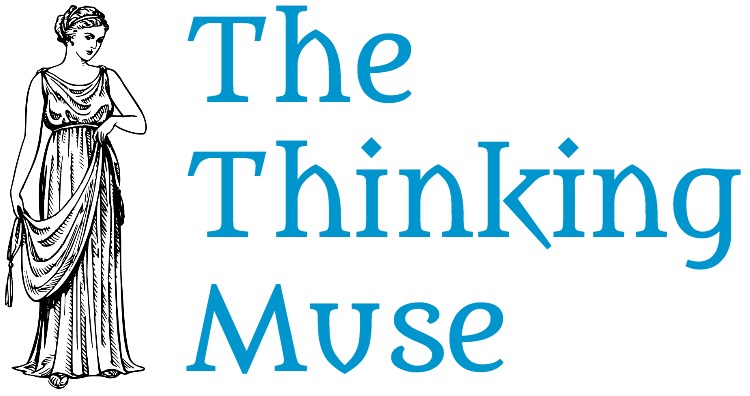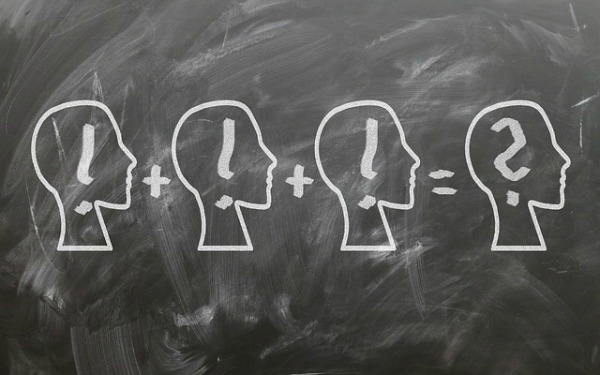The secrets of puzzles

I love a secret.
Who doesn’t?
You know what is better than a secret? Solving a mystery to find out the secret. Good stuff. That is why it is so popular for stories, books, and movies to put you in the investigator role. The storylines show the clues as you follow the main character to the discovery and justice. So satisfying.
Even if it doesn’t make sense. Do you really think profilers, forensic pathologists, and medical examiners are out running down the street after suspects and completing intensive interrogations? Do you care? It is all about solving the mystery, the puzzle.
Puzzles is what this article is about. Doing a puzzle, you get into the flow and then at the end you get the prize. The thrill of victory.
I found some puzzles that I want to share with you and review, the Museum Collection from Clementoni. But first, I want to piece together the background on puzzles.
Puzzles, Games, and Toys
Based on the Oxford pocket dictionary a puzzle is a “game, toy, or problem designed to test ingenuity or knowledge”. This leaves a lot of room for interpretation.
What makes a puzzle a puzzle? According to Proto-Knowledge, it comes down to the interaction and goal.

- A toy has little to no rules and has an open-ended goal or no goal. The actor is completely free to drive the entire experience.
- A game has rules and the goal is to beat an opponent. The actors follow the rules while taking offensive and/or defensive actions to victory.
- A puzzle has rules and a singular goal/solution. The actor uses their skills and knowledge to find the solution with no outside barriers/obstacles.
An article from Scott Kim, a puzzle designer, suggests that a puzzle is a form of play that is fun and has a single correct answer. Fun is subjective. Scott identifies puzzling fun as the correct balance of novelty, difficulty, and trickiness. There is obviously an art to creating puzzles that are enjoyable. What a cool job.
Some other game designers weigh in on the topic in What is the difference between a toy, a game, a puzzle, and a sport?. It discusses the role taken by the user and what happens as you add elements such as interaction, goals, and competitors. It also covers the mediums of art, entertainment, and sport.
The line between all these can be fuzzy. Toys can become games. Puzzles can be used as games. It really depends on how the players choose to interact with it.
The secrets
What is actually going on in your brain when you are doing jigsaw puzzles? Both sides are working together. The left side is logical and works sequentially. The right side is more creative and emotional. When both sides work together you get a synergistic result.
During the process of puzzling, the brain releases dopamine. Dopamine is a wonderfully complex hormone, as explained in this slate.com article. The article talks about how dopamine is involved with love, lust, attention, motivation, addiction, and so many other wonderful and sinful things. Now the whole candy crush phenomena makes more sense.
Social-psychiatry.com also likens doing puzzles to meditation. Since they both bring about a sense of calm concentration and peace of mind, I can totally see that.
Then we get our Aha! moment. The secret is revealed with the solution. If only for a brief moment, the world makes complete sense. Whether from persistence or a flash of insight, it feels good. The brain areas correlated with reward light up. ding, ding, ding
Interestingly enough, NPR.com and NYTimes.com mention that the flashes of insight sometimes required to solve a puzzle are due to a more open and playful state of mind. This state can help you spot connections or see things you may not normally notice. So if you are stuck in a puzzle or any other problem for that matter, have a chuckle to see if that helps change your perspective. Considering this, I can’t help but think of Robin Williams’ fast-talking seemingly random digressions during interviews, complete genius.
Then, there is the buzz about puzzles helping with cognitive function. You’ve seen the ads trying to capitalize on the fear of cognitive decline. Before you invest your hard-earned dollars for that, I would look closely at the science. Apparently, there is “ceiling effect”. Those who are already cognitively fit will not see benefits, such as prevention for cognitive decline due to Alzheimer’s.
I do believe there are benefits to puzzling, I just wouldn’t put any money on banking on long term benefits until the science is more solid. If you want to read more on this topic head over to these articles at Scientificamerican.com or figur8.net.
What does this all boil down to? The secrets are that puzzles can:
- Give you a rush of dopamine
- Imbue a sense of concentration and peace similar to meditation
- Give you that Aha! moment
- Make you a better puzzler and perhaps some added dexterity and spatial reasoning skills
- Let you solve the mystery!!!
How do I like to get in on these secrets? One of my finds, a Clementoni company collection of puzzles.
Museum Collection puzzles
I really enjoy the Museum Collection puzzles from Clementoni. These are not your kids’ puzzles. They are for the serious puzzler only. wink
As the name implies, the puzzle images are from famous works of art, familiar even to those unfamiliar with the art world. Van Gogh, Botticelli, Da Vinci, Renoir, and Michelangelo. Wowza.
I have to say the images make a huge difference. It is fascinating to be able to get to know these masterpieces at such an intimate level. Searching for the one small piece that contains the left side of an angelic face makes you appreciate it all the more. It is also immensely satisfying to complete. So much more than a scattering of candy or animal faces, or even a beautiful landscape. You see the artistry piece by piece of these legendary masters. You even get to participate in the creation of your own version.
Does size matter? As they say, go big or go home. I like a real challenge and don’t really consider puzzles less than 1000 pieces.
These puzzles are large. 500-6000 pieces. Oh my! I may have a new bucket list item. The largest puzzles I have done are 2000 pieces and those are a commitment, particularly if you puzzle alone. If the 6000 piece puzzle intrigues you, you will have to find a table that can accommodate the 5’5″ by 3’9″ puzzle through to completion.
From this collection, I have done the Parnaso by Raffaello and The Last Supper by Leonardo. I enjoyed both, with a slight preference of the Parnaso. I am looking forward to trying more.
The puzzle board and cuts are fine, but not quite as nice as the snap you get from a Ravensburger. They are ribbon-cut puzzles, which means the pieces are cut on a grid of rows and columns. Pretty standard stuff.
I did have a missing piece in The Last Supper. It was extremely frustrating to complete the puzzle and be missing a single piece. The boxes include information for how to retrieve a missing piece, but at the time I didn’t think to look at it. Pretty dumb, I admit. I merely went to their website and sent an email. I did get a canned response stating they would get in touch. No further contact or missing piece followed. I should have been more assertive, but decided I wanted my table back and decided to forget about it.
By the way, I have had a missing piece before from a puzzle for my kids. That company, TDC Games, was great and offered to send me a new puzzle. Friendly and professional.
So, in the end I am giving the Museum Collection at Clementoni a restrained recommendation. I was bummed out about the customer service, but like the variety of large sizes. I also think that the image matters and these images are literally works of art.
Different types of puzzles
I relish in most types of puzzles, with the exception of crosswords. My vocabulary and/or brain just aren’t suited for it. sigh. Oh well, there are plenty of logic and other types of puzzles to fulfill my craving for a good challenge.
After digging around, here is a list I compiled of various types of puzzles. What are your favorite?
- Logic puzzles

- Math puzzles
- Riddles
- Brain teasers (brainbats, paradoxes, cryptograms)
- Jigsaw puzzles
- Tiling puzzles (dominoes)
- Word puzzles (crosswords, anagrams)
- Tour puzzles (mazes)
- Picture puzzles (spot the difference, connect the dots)
- Mechanical puzzles (Rubik’s cube, interlocking puzzles)
- Funny puzzles/jokes
- Construction puzzles (sticks, coins, tiles, bridges)
- Transport puzzles (sokoban)
- Sliding puzzles (n-puzzle)
- Combination puzzles (combine 2 or more of the above)
Are you a puzzler?
Young or old. Puzzles can be great inexpensive entertainment for anyone. It isn’t even bad for you! I have included some links below in Resources for online puzzle sites. Of course, there are also many apps out there for the puzzle lover. My favorite puzzles are jigsaw, Sudoku, Flow Free, Blendoku, Move the Box, and Hot Gems.
Let me know your puzzle appetite in the poll below. If you have a puzzle that you adore, please share it with me in the comments. I am always open to new puzzles.
Resources
Brainbashers.com -a great site to check out a ton of puzzles
Brain Games: Do They Really Work? from Scientificamerican.com
Cryptograms.org -a site I fell into if you like cryptograms and want to bring out your inner spy
The ultimate puzzle site -a site with puzzles and some corny jokes to take the edge off when you are flummoxed
Tracing the Spark of Creative Problem-Solving at NYTimes.com
Types of Puzzles by Dedo Mraz at ezinearticles.com
What are the Brain Benefits of Jigsaw Puzzles? from figur8.net
Why jigsaw puzzles are good for the brain from social-psychiatry.com




